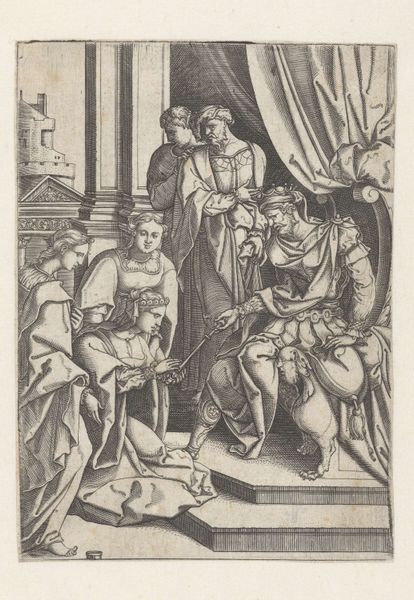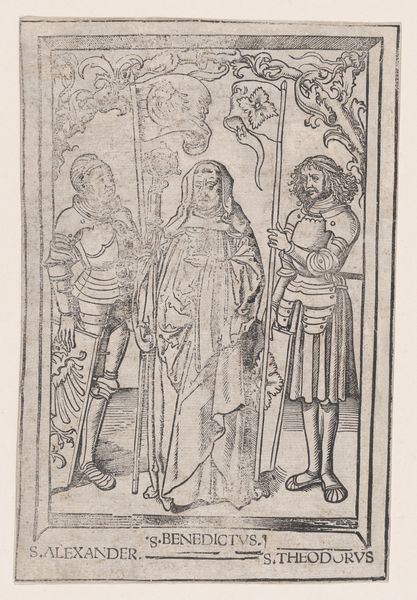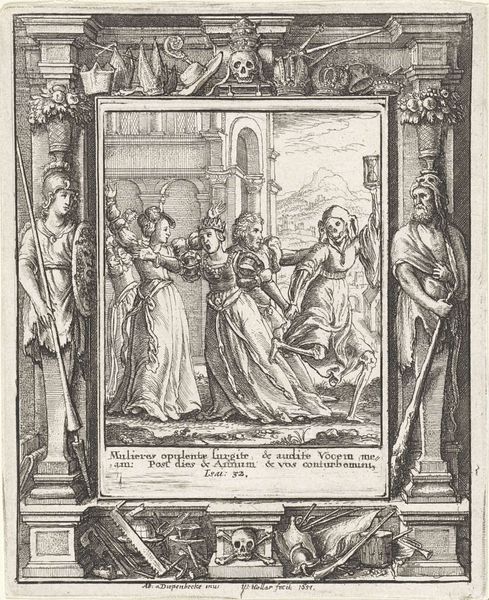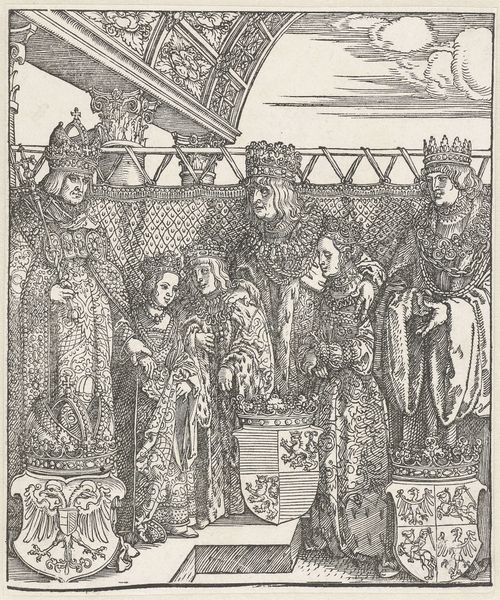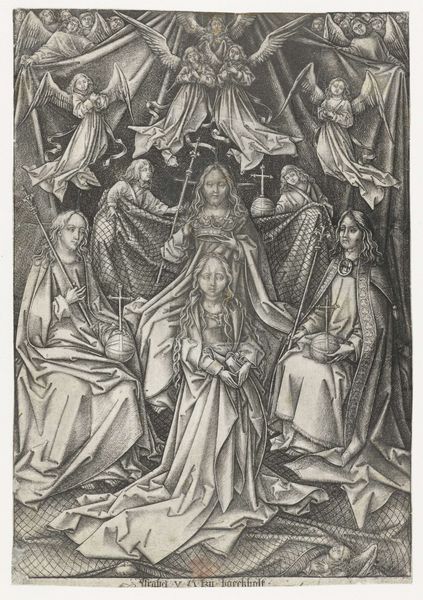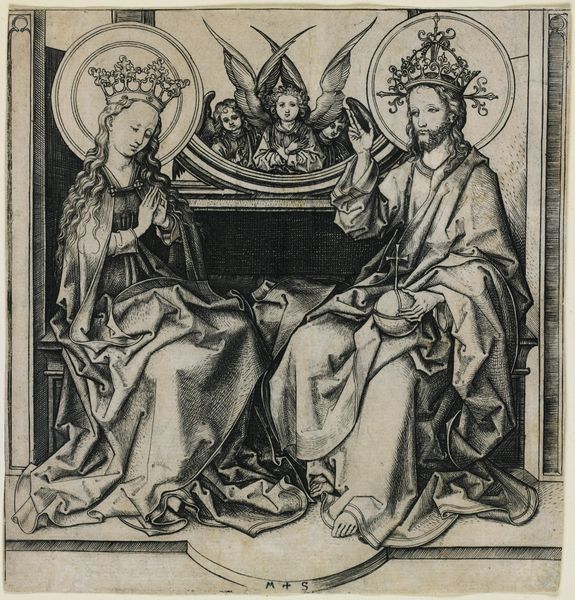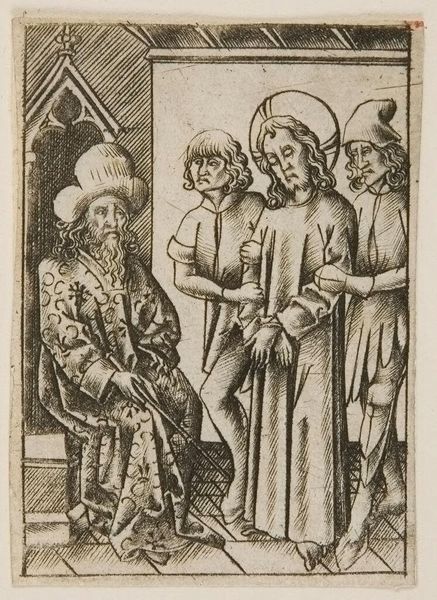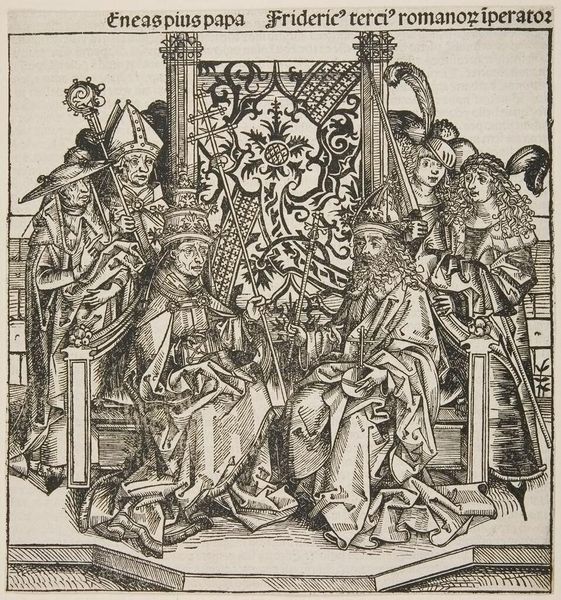
Geknielde koning Richard II vergezeld door Johannes de Doper, koning Edmund en koning Eduard de Belijder 1639
0:00
0:00
Dimensions: height 251 mm, width 139 mm
Copyright: Rijks Museum: Open Domain
Wenceslaus Hollar created this engraving, "Kneeling King Richard II Accompanied by John the Baptist, King Edmund and King Edward the Confessor" in 1639. It’s interesting to consider this print as part of a longer history of royal portraiture in Europe. Royal portraits have always been about more than just likeness; they're carefully constructed images designed to project power, legitimacy, and dynastic continuity. Here, Richard II is shown kneeling before John the Baptist, King Edmund, and King Edward the Confessor. This composition creates meaning through visual codes, cultural references, and historical associations. Consider the way he is aligned with these figures, the clothing he wears, and the Latin text which speaks to his lineage. To truly understand this image, we can delve into the social and political context of 17th-century Europe, looking into sources such as court records, political pamphlets, and other visual representations of the monarchy. By understanding the institutional forces that shaped this image, we can better understand the public role of art, the politics of imagery, and the social conditions that shape artistic production.
Comments
No comments
Be the first to comment and join the conversation on the ultimate creative platform.


